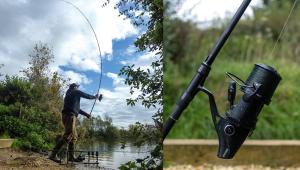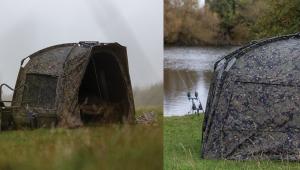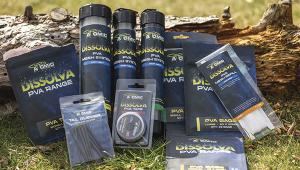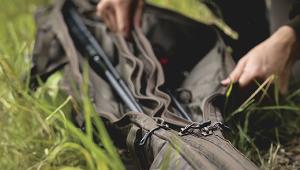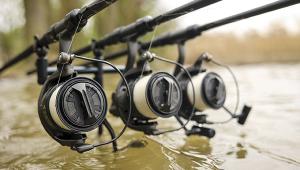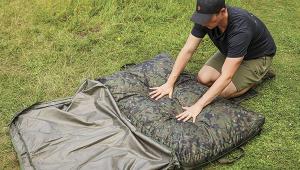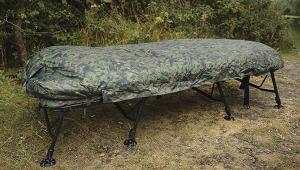Anatomy Of A Carp Rig | Luke Vallory's Spinner Hair Rig
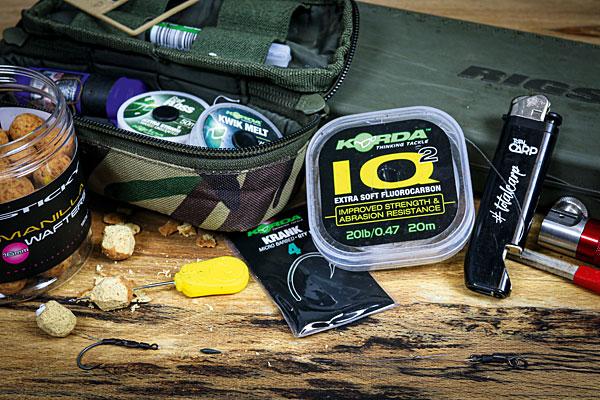
In the past I have always been quite simple with my bottom bait rigs and had always done well just using a simple knotless knot with a Krank hook. However, I did always feel that I could have been using something a bit more effective at hooking them, something that the carp would find harder to deal with, and something completely different from what other people use.
It took me a while to get to the rig that I’m using now, but it all grew from playing with the original Amnesia D rig. I know a lot of people have had great success using these, largely down to the stiffness of the hook link making it harder for the carp to eject once they get it in their mouth. However, I also know a fair few people who have lost fish on that rig, and having used it myself a few times I wasn’t overly enamoured with the hook-holds I was getting. The issue I was having with the rig was the lack of movement to enable the hook to fall into a position that it could hook the bottom lip, distinctly this meant rotational movement at the hook end.
With the growth in popularity of the spinner or Ronnie rig, so too came the advent of the spinner swivels that would provide that rotational movement at the hook end that I required. Traditionally the spinner rig is fished with a loop on to the swivel to create a hinge to allow the hook to be popped up. I have known people to use the same rig for wafters with good success too; however, I wanted to combine this with the stiff properties of the Amnesia D rig, hence attaching the swivel directly to the fluorocarbon boom using a Grinner knot.
I’ll mention here that it’s worth tightening the Grinner knot away from the swivel before sliding it into position to ensure you have the hook link pushing perfectly straight from the knot (no pigtailing).
I also then use a hair on the hook as opposed to a hook ring swivel and bead on the shank. I believe it gives the rig a lot more separation, which gives the rig a lot more natural movement, enabling the hook to behave independently of the bait. This allows the hook to turn, spin and drop down in order to find a good hook-hold.
Furthermore, upon pricking the fish, this separation reduces the ability for the fish to blow the hook free. I believe that it works best with the hair exiting the shank level with the point of the hook or slightly closer to the eye. You’ll find that by doing so, when the bait is picked up, it loads the weight of the hook on to the point so that the point immediately spins downwards, dropping perfectly into position. The rig can be used with a variety of hook patterns too, but I personally think the wide gape of the Krank further emphasises this effect.
It’s a rig that I’ve now used for a couple of years and it’s been incredibly effective – I couldn’t ask for more out of a wafter rig! I’ve caught fish using it all through the year even when fish are feeding very slowly and cautiously. I’ll typically fish the boom about five inches long, as I tend to fish it on cleaner spots over a bit of bait, but in reality you can tailor the rig to any circumstances you desire!
Step-By-Step: Tying Luke Vallory's Spinner Hair Rig
1. Tie a small hair loop in a length of supple braid such as Supernatural.
2. Whip the hair on to a size 4 Krank hook.
3. Using sharp scissors snip the braid 2mm from the hook eye.
4. Use a lighter to blob the braid to stop it from slipping back through the eye.
5. Take a length of soft fluorocarbon such as 20lb IQ2.
6. Tie a spinner swivel to one end using a grinner knot – ensure there is no pigtailing.
7. Tie a figure of eight loop knot in the other end. Luke uses his rig approximately five inches long.
8. Pass a short length of shrink tube over the hook, it should be reach no further than the point once in position.
9. Attach the hook to the spinner swivel and pull the tubing into position – note that Luke doesn’t cover the swivel barrel.
10. Luke dunks the hook section into a simmering kettle – this avoids damaging the hook link with super-hot steam.
11. Mould a small blob of putty roughly an inch from the hook swivel.
12. Mount your hook bait and you’re ready to go! Luke prefers a whittled down wafter.
- Log in or register to post comments







